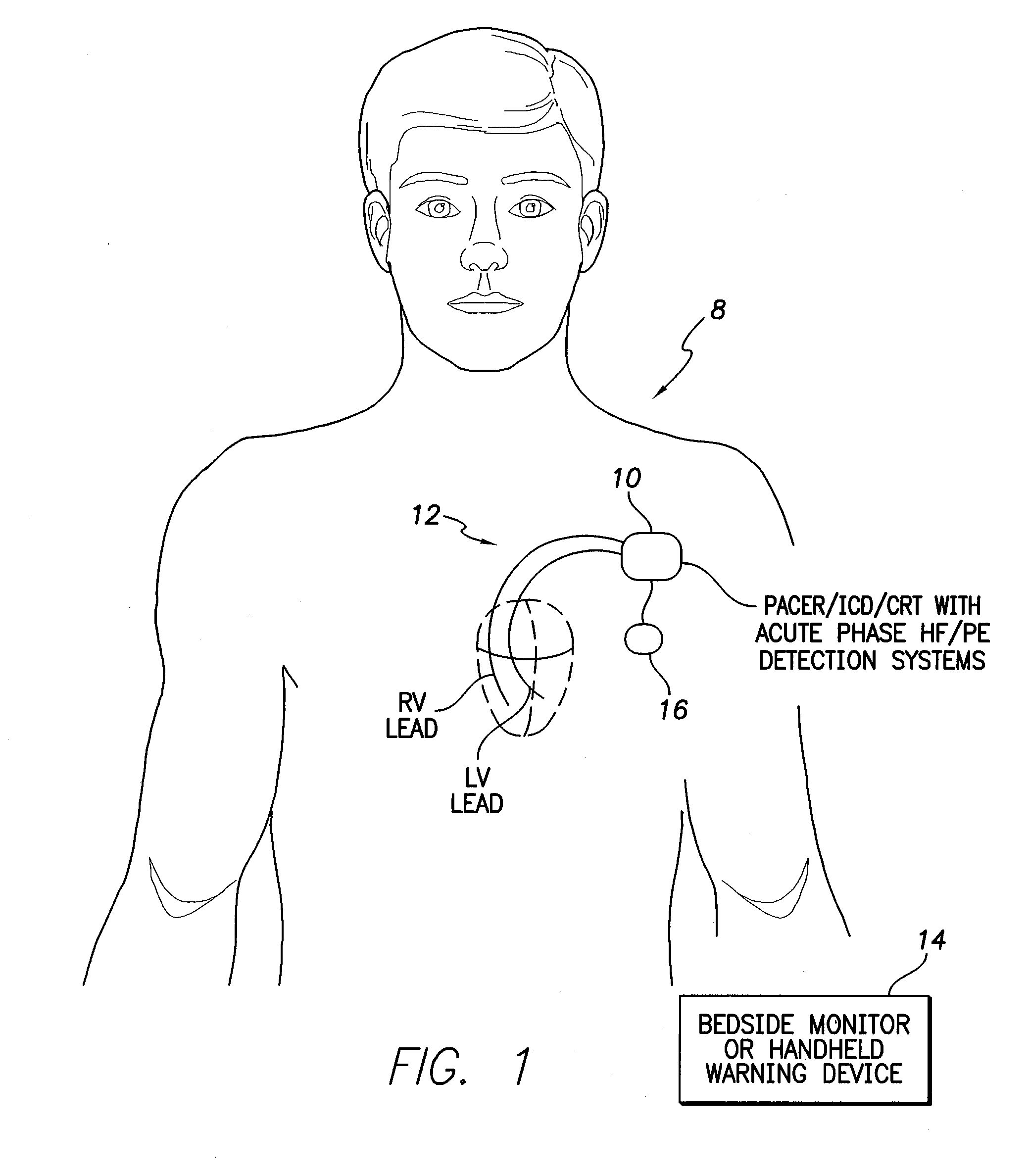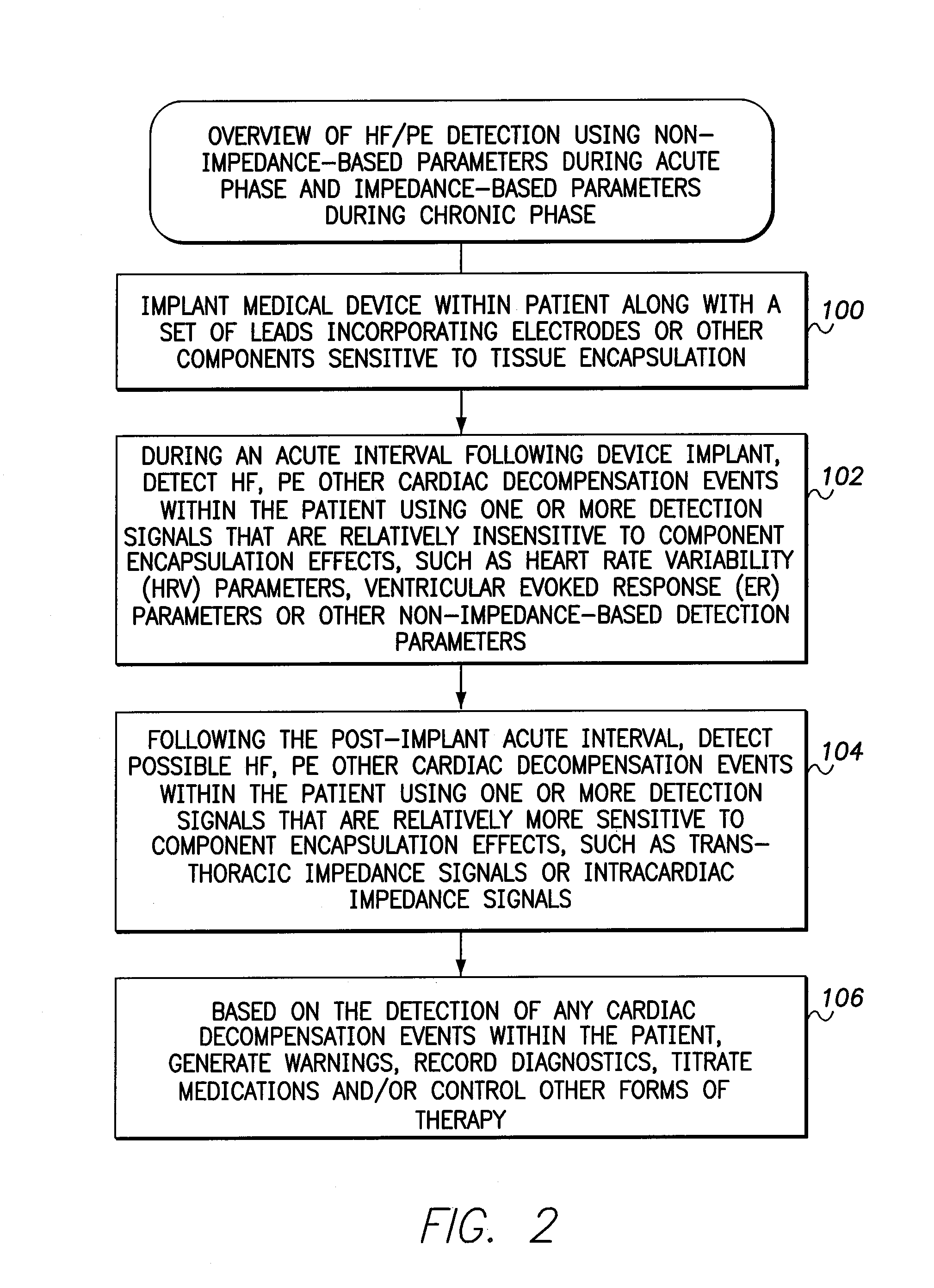Systems and Methods for Activating and Controlling Impedance-Based Detection Systems of Implantable Medical Devices
a detection system and implantable technology, applied in the field of implantable medical devices, can solve problems such as heart failure, congestive heart failure, and problems that can aris
- Summary
- Abstract
- Description
- Claims
- Application Information
AI Technical Summary
Benefits of technology
Problems solved by technology
Method used
Image
Examples
Embodiment Construction
[0036]The following description includes the best mode presently contemplated for practicing the invention. This description is not to be taken in a limiting sense but is made merely to describe general principles of the invention. The scope of the invention should be ascertained with reference to the issued claims. In the description of the invention that follows, like numerals or reference designators are used to refer to like parts or elements throughout.
Overview of Implantable Medical System
[0037]FIG. 1 illustrates an implantable medical system 8 having a pacemaker, ICD, or CRT device 10 (herein “pacer / ICD”) equipped with acute phase HF / PE detection systems operative to detect cardiac decompensation events such as HF and cardiogenic PE during an initial acute phase following device implant using impedance or other electrical signals measured via a set of cardiac pacing / sensing leads 12 or using various physiological sensors. A stylized representation of two cardiac pacing / sensin...
PUM
 Login to View More
Login to View More Abstract
Description
Claims
Application Information
 Login to View More
Login to View More - R&D
- Intellectual Property
- Life Sciences
- Materials
- Tech Scout
- Unparalleled Data Quality
- Higher Quality Content
- 60% Fewer Hallucinations
Browse by: Latest US Patents, China's latest patents, Technical Efficacy Thesaurus, Application Domain, Technology Topic, Popular Technical Reports.
© 2025 PatSnap. All rights reserved.Legal|Privacy policy|Modern Slavery Act Transparency Statement|Sitemap|About US| Contact US: help@patsnap.com



